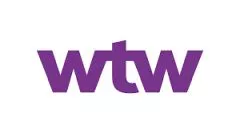How can enterprise risk management (ERM) help sports organisations understand and address multifaceted challenges to their brands and financial performance?
Organisations in the sports industry are no strangers to the balance of risk and reward. In the pursuit of success, you need to maintain focus on financial performance, brand management, cultivating a loyal fan base while also being alert to increasing regulation and compliance, among many other risks. An ERM framework can help your sports organisation understand and address these complex challenges and opportunities. So, below, we examine:
- The core principles of an ERM framework
- How ERM can address risks specific to the sports industry
- ERM and value drivers for sports organisations
- How sports organisations can connect value drivers and unique risks via ERM
- Next steps on introducing ERM into your sports organisation
The core principles of an ERM framework
ERM seeks to give an organisation a clear, consistent and comprehensive picture of whether it is taking the right amount of risk. The ERM framework sets out how this will be achieved. Whilst a framework can go into substantial detail, at its core are answers to some simple questions:
- What is of fundamental importance to our organisation and is therefore "at risk"? (Our "value drivers)
- How will we measure risk to these things?
- How much risk are we willing to take? (Our "risk appetite")
- How will we capture and report information about our risks?
- What are the specific roles and responsibilities for individuals and teams across our organisation?
How ERM can address risks specific to the sports industry
Technology-enhanced customer experiences
The rise of e-sports, artificial intelligence (AI) and augmented/virtual reality (AR/VR) presents a range of opportunities and risks for the sports industry. These technologies can enhance the fan experience. For example, IBM's Watson AI allows fans at Wimbledon to overlay virtual player profiles onto the court using their smartphones. Formula 1, meanwhile, is partnering with Amazon Web Services (AWS) to turn millions of data points from cars and races to create engaging fan experience.
However, investing in these technologies can be expensive and complex. Also, with increasing complexity comes increasing risk of cyber breach or outage. On the other hand, clubs, competitions, and venues that don't invest strategically into upgraded customer experiences risk their fanbase turning to alternative providers or sports.
Applying ERM techniques can empower you to assess and compare the impact of these trends on your business model, explore opportunities for collaboration or diversification to stay ahead of the curve while ensuring the financial risks you take in pursuit of tech-enabled opportunities remain reasonable.
Unique regulatory environment
Organisations in the sports industry must contend with an array of regulations that govern everything from player contracts to fan safety. Non-compliance can have a considerable impact. For example, Everton and Nottingham Forest both received points penalties in the 2023/24 season for breaches of Profit and Sustainability rules (PSR) which led to them narrowly avoiding relegation from the Premier League. Many sports have their own regulatory bodies – such as the British Horseracing Authority or the England and Wales Cricket Board – which have the power to hand out monetary penalties and suspensions that can be equally as disruptive for a sporting organisation than non-compliance with broader national legislation or regulation.
An ERM framework provides a structured approach to compliance. It can help you navigate the regulatory landscape and avoid penalties that could damage both your reputation and financial stability, while taking a balanced approach to compliance that doesn't unnecessarily constrain sporting success.
Risks from large crowds
Hosting events with a substantial on-site audience introduces risks related to safety and security. ERM techniques can help you systematically identify the causes of potential crises and mitigate both their likelihood and impact.
Potential crises could include stampedes, fights or other forms of disorder, which can pose serious threats to the well-being of spectators. Robustly applying an ERM framework can drive action such as crowd control strategies, emergency response plans and communication protocols to ensure swift and effective responses in case of emergencies.
Deploying an ERM process around these risk will also giving your leadership auditable assurance over the quality and reliability of your responses to potential crowd-related crises.
ERM and value drivers for sports organisations
In the sports industry, long-term success is driven by more than victories on the field. Broader factors, which you can think of as 'value drivers' capture what organisations care about, seek to protect and aim to grow through their activities.
An ERM framework can help clarify and address your value drivers. It can provide a way of managing both financial and non-financial risks that enables you to compare, contrast and respond appropriately to risks to your critical value drivers.
So, how can you start identifying your value drivers?
Value drivers differ depending on the unique goals, vision and mission of your organisation. In the sports industry, value drivers could include brand reputation, fan engagement, sustained sporting excellence and financial performance.
Consider the lost revenues, estimated at around £1bn, faced by English football clubs during the COVID-19 pandemic. Robust ERM frameworks may have helped clubs identify this risk in advance, based on its impact on value drivers, which could have helped clubs take proactive steps to prepare for such an event. These moves may not only have mitigated the reductions in matchday revenues but also may have preserved clubs' brand reputations. By enabling the clubs to better maintain fan engagement, safeguarding long-term success beyond the immediate financial challenge.
How sports organisations can connect value drivers and unique risks via ERM
By assessing unique risks based on their impact to clearly defined value drivers, sporting organisations can enhance their understanding of risks, capturing not just what may go wrong, but the specific impact that could have on something the organisation truly cares about. For example, a horse-racing organisation may identify the following risks aligned to its industry-specific value drivers:
- Financial performance – The impact of the abandonment of one or more major events in peak season due to adverse weather
- Customer experience – Insufficient staffing levels leading to long queues at entrances or food/drink vending points
- Regulatory compliance – Inadequate training leading to sales of alcohol to underage guests, ultimately leading to loss of licence to serve alcohol
- Safety and security – Poor track conditions leading to mid-race falls, impacting the safety and wellbeing of horses and jockeys.
Next steps on introducing ERM into your sports organisation
In the fast-paced and high-stakes world of the sports industry, embracing ERM could prove crucial to long-term resilience. By giving you a systematic approach to understanding and addressing financial risks in tandem with broader organisational objectives – and by proactively managing the unique challenges posed by changing consumer trends, regulatory activities, sponsorship fluctuations and technological risks – you can secure a competitive advantage on and off the field.
Importantly, engaging your business leaders on ERM can show them a robust and repeatable way of enhancing their risk governance to underscore enduring success.
For support in designing and implementing your ERM framework or to find out more, please get in touch.
The content of this article is intended to provide a general guide to the subject matter. Specialist advice should be sought about your specific circumstances.



